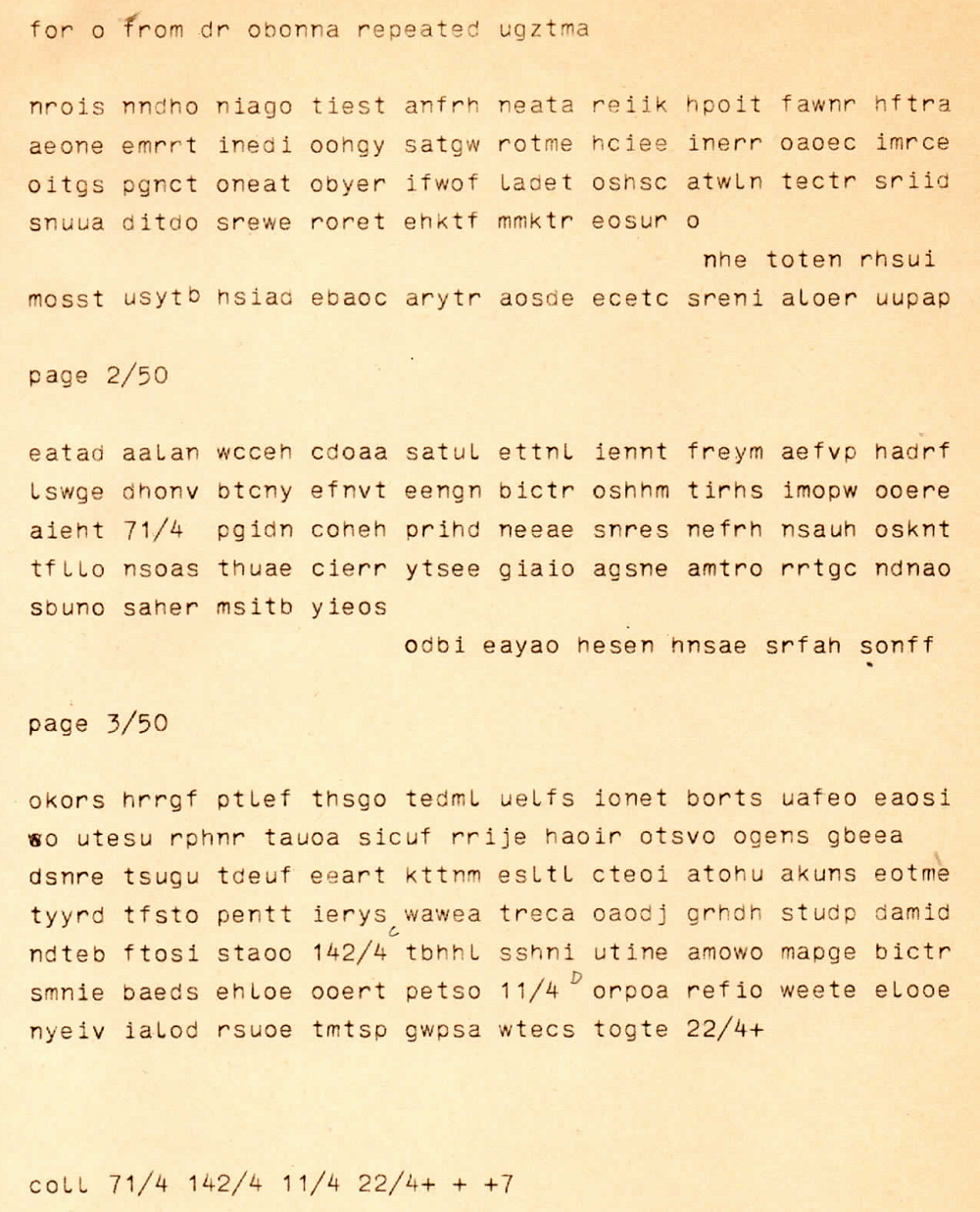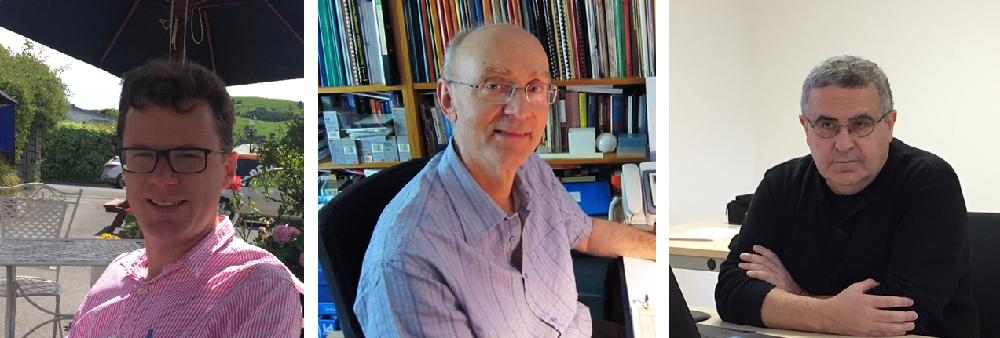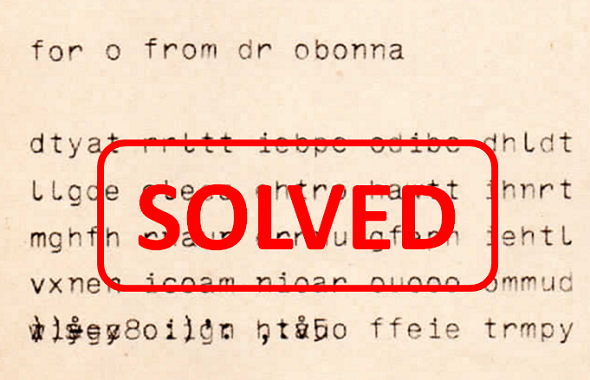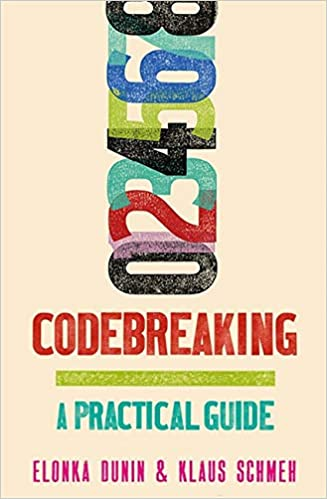Last year, blog readers Richard Bean, Frode Weierud and George Lasry broke a series of ciphertexts from the Biafran War. Now they have published the details in a research paper.
The Nigerian Civil War, also known as the Biafran War, was fought between the government of Nigeria and the secessionist state of Biafra. The conflict resulted from political, economic, ethnic, cultural and religious tensions. Control over the lucrative oil production in the Niger Delta played an important role.
The Biafran Ciphers
Last year, Frode Weierud, a Norwegian Enigma and crypto history expert, published a report about a collection of about 30 encrypted messages from the Biafran War. These ciphertexts were transmitted by radio teletype between Biafra and Lisbon. Frode intercepted them with his radio amateur equipment.
Frode tried to decipher these messages, but to no avail. He considered publishing them in a Cryptologia article in the late 1970s, but decided not to do so, as they stemmed from a recent war and the content still could have been sensitive.
40 years later, Frode thought that it was now safe to publish the messages. So, he made scans and transcripts of them available on his website. Last November, I introduced the Biafran Ciphers on this blog. Some of my readers posted interesting comments, which helped to better understand these messages, but for a few weeks, nobody came up with a solution.
The messages in question were sent between August 2nd and October 21st, 1969. Four of them consist of five-digit groups, the others of five-letter groups. This suggests that two different ciphers were used. The following scan shows a message of the letter type:

Source: Weierud
Here’s a digit message:

Source: Weierud
In December, my friend and blog reader George Lasry, who is known as an outstanding codebreaker, informed me that a team consisting of him, Richard Bean, and Frode Weierud had broken the letter messages.

Richard Bean, Frode Weierud, George Lasry (Sources: Bean, Weierud, Schmeh)
The encryption system used turned out to be a transposition cipher. To solve these cryptograms, George, Richard, and Frode tried multiple anagramming (unsuccessfully) and hill climbing (sucessfully), both codebreaking techniques that are explained in detail in my next book.
♦♦♦♦♦♦♦♦♦ Coming November 2020 ♦♦♦♦♦♦♦♦♦♦♦♦♦
A fantastic resource, full of great stories of the deduction, intuition, and perseverance involved in codebreaking, along with the tales of how codebreakers have used their tools to attack seemingly unbreakable ciphers.
Wes Dafler, American Cryptogram Association (DARING FLAIR)
♦♦♦♦♦♦♦♦♦♦♦♦♦♦♦♦♦♦♦♦♦♦♦♦♦♦♦♦♦♦♦♦♦♦♦♦♦♦
Of course, I immediately reported on the solution of the Biafran letter messages on my blog. At the end of the year, I awarded the Golden Alice in the codebreaking category to George, Richard, and Frode.
While the letter messages were now broken, the digit messages remained unsolved.
New publications
My blog post about the solving of the Biafran letter messages was, of course, only a brief summary. As George and Richard recently informed me, there are now two additional publications about the Biafran Ciphers. These articles go into more detail.
First, George, Richard and Frode wrote a research paper, which is available on Frode’s website. This work has 63 pages, so you can expect to find every detail in it you are looking for. Of course, I am proud that my blog played a role in the occurence of this paper.
Second, George, Richard and Frode published a condensed version of their paper in an article on the web portal The Conversation. This work doesn’t provide much information about the encryption system used, but it tells the background story. Here are a few excerpts:
Three of us worked on the project, each with different disciplines – a mathematician, a computer scientist and a radio technologist. We used manual and computerised cryptanalysis methods to decipher a series of transposition ciphers […]
It took us three months to figure out how the encryption worked and what keys were used. We also needed to read about the context of the war to understand and interpret the messages. The historical figures were unfamiliar to us and many codewords were used for people, countries and objects.
In the end, the decrypted messages provided a treasure trove of information about how men and women working for the breakaway state in Europe tried to garner support for Biafra from afar during the war.
As mentioned earlier, the digit messages are still unsolved. I will introduce them in a future post.
Congratulations again to George, Richard and Frode on this great codebreaking success! I hope that many people will read the two publications.
Follow @KlausSchmeh
Further reading: Who can break the cryptograms of Civil War spy Robert Bunch?
Linkedin: https://www.linkedin.com/groups/13501820
Facebook: https://www.facebook.com/groups/763282653806483/




Kommentare (5)